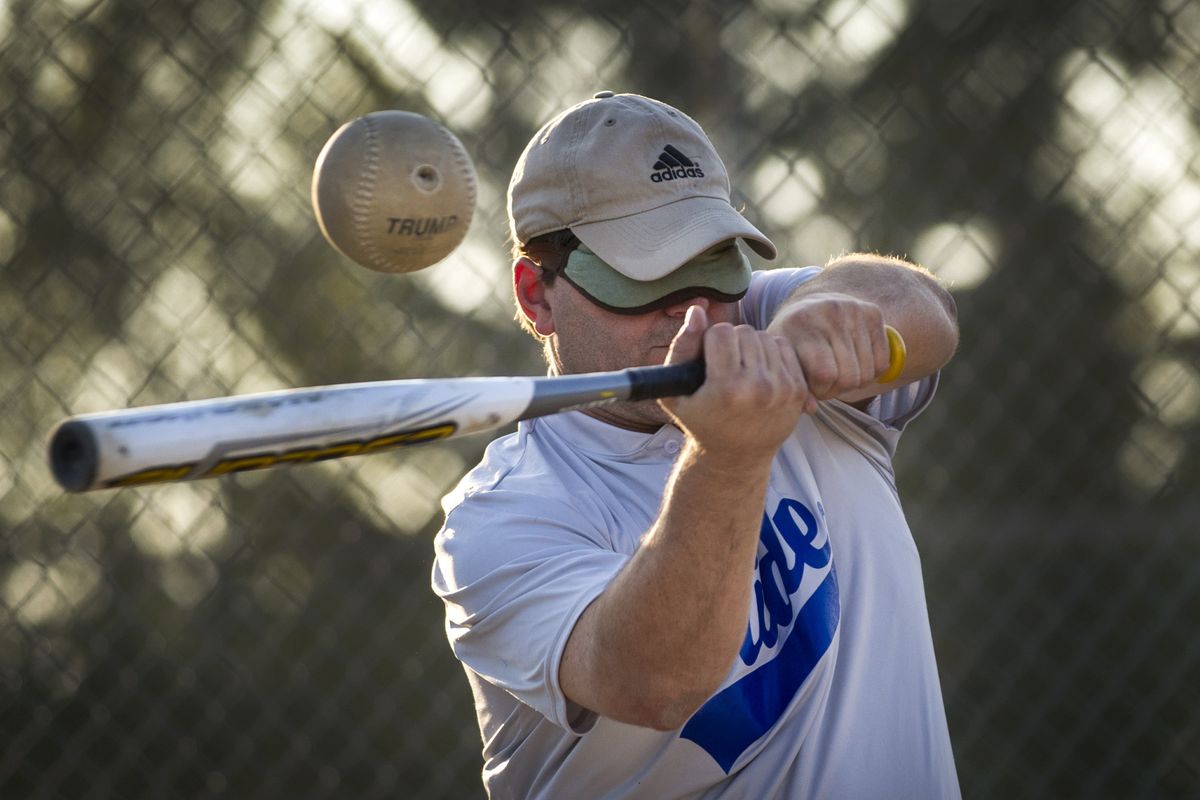Hearing the ball well
Losing their sight doesn’t keep Spokane Pride beep baseball players from competing in a tough – yet extraordinarily rewarding – game

It doesn’t take eyesight to have a vision – though Charlie Fairbanks had both when the concept of beep baseball was born in 1964.
Fairbanks, a telephone company worker in Denver, wanted his visually impaired daughter to be able to play with other kids on their block. So he borrowed and blended bits and pieces from America’s favorite pastime and invented baseball for the blind.
The game finally reached the Pacific Northwest in April, when the Spokane Pride first started practicing swinging a bat while blindfolded – which threw the “keep your eye on the ball” mantra right out the window.
And it opened the door for a lot of tongue-in-cheek chirping from the dugout.
“Good eye,” somebody will yell to a batter from the opposite team who is called out on strikes. Or there’s, “Are you blind?” to the ump with zero vision impairment.
“I love it,” said Greg Szabo, who plays for the Pride – one of 24 teams registered with the National Beep Baseball Association.
“I’ve always been legally blind, but when I was younger I had much better vision,” he added. “So when I was younger I played regular baseball. Once I lost a big chunk of my vision I just thought there was no hope of getting out and having something athletic to do.”
And he found it to be one of those rare moments in life when he was thrilled to discover he was wrong – that there was something out there, something competitive.
The game requires the right mix of athleticism and courage, with just enough zany rules and room for debate to keep it entertaining for players and spectators alike. It’s also a little bit violent, which Szabo and most of the participants don’t mind.
Perhaps when your vision is taken from you, you view pain a bit differently.
“I can’t see, but I can play and I’ve still got that competitive fire burning inside me,” he said. “I still like to compete. And win.”
To do so, players (six per team) are all blindfolded to make sure the playing field is even, since some have partial vision. They must hit and field a ball that makes a loud beeping noise as they run to bases – two of them – that also emit identifying tones.
Runs are scored when a batter can arrive to one of the tone-emitting bases prior to the outfielder stopping and holding up the ball and yelling, “I got it!”
The games last six innings, batters get four strikes instead of three, there are six defenders on the field at a time, and there’s no second base. When the batter hits the ball, he or she runs to first or third – whichever one beeps.
The bases are 4-foot-tall padded cylinders that look like heavy punching bags, and if the batter gets to the base before the ball is fielded, his team scores a run. Otherwise, he’s out – and teams still get three of those each inning.
Also, the batter and pitcher are on the same team. The pitcher – who has his or her eyesight – cannot field the ball once it’s been hit. Throwing from 20 feet away, the pitcher says, “Ready – pitch,” which aids the batter in timing a swing.
“It’s really tough – we’ve practiced twice a week since April,” said Vivian Huschke as the Pride held their first scrimmage Thursday afternoon at Franklin Park.
Huschke played softball when she was younger, but couldn’t after a vaccination caused her to lose her eyesight in her mid-20s.
Then her sight came back.
“I regained a lot of what I lost – it was a miracle,” she said.
Then her sight went away again.
“You can’t feel sorry for yourself,” she said. “But that was devastating.”
That’s why it’s even more important that nobody can take the sport away from them.
“We even have a (National Beep Baseball Association) World Series,” said Huschke. “There are a few international teams now, as well.”
Like Huschke said right before the team took the field on Thursday: You really have to see it to believe it.